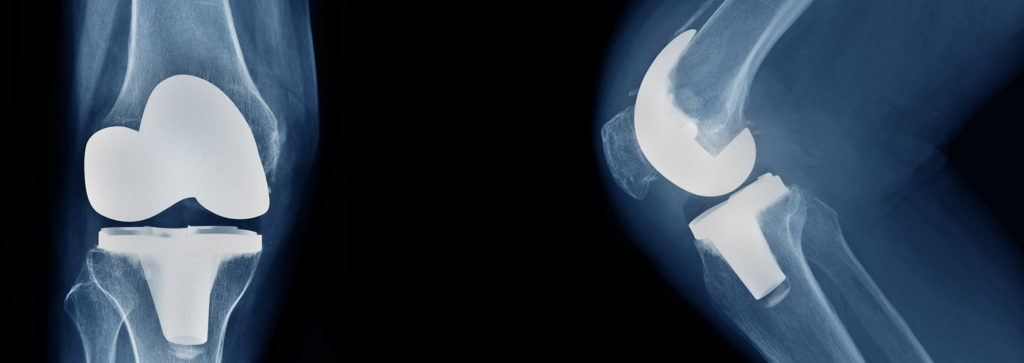If your knee or hip pain has gotten so severe that you can’t get up and down stairs or get out bed, and you’ve tried all the things your doctor has recommended, it may be time for you and your doctor to discuss joint replacement. (published site)
You are not alone. In the first nationwide study of hip and knee arthroplasty, as orthopedic professionals refer to joint replacement, researchers found that in 2014, an estimated 7.8 million Americans were living with artificial joints and another 1 million were opting for joint replacement each year. Most of those are people over age 70.
When Joint Replacement May Be the Best Option
You’ve already tried physical therapy, medications, an exercise program, and even a cane, but nothing has reduced the pain or the difficulty of moving. According to the National Institutes of Arthritis and Musculoskeletal and Skin Disease, if you’ve tried all those and X-rays show that damage to your joints may be causing the pain, then joint replacement is an appropriate procedure to consider.
Worn cartilage or damaged bone from arthritis, fracture, or injury are all reasons non-surgical treatments like drugs, physical therapy, and activity changes may not relieve the pain. In such cases, joint replacement may be the only option for relieving the pain. While knee and hip joint replacements are the most common, other joints that can be replaced include the shoulders, fingers, ankles, and elbows.
The goal of joint replacement surgery is to relieve pain, help the joint work better, and allow you to return to your previous ability to walk and function in your daily activities before the pain became debilitating.
You are not alone. In the first nationwide study of hip and knee arthroplasty, as orthopedic professionals refer to joint replacement, researchers found that in 2014, an estimated 7.8 million Americans were living with artificial joints and another 1 million were opting for joint replacement each year. Most of those are people over age 70.
When Joint Replacement May Be the Best Option
You’ve already tried physical therapy, medications, an exercise program, and even a cane, but nothing has reduced the pain or the difficulty of moving. According to the National Institutes of Arthritis and Musculoskeletal and Skin Disease, if you’ve tried all those and X-rays show that damage to your joints may be causing the pain, then joint replacement is an appropriate procedure to consider.
Worn cartilage or damaged bone from arthritis, fracture, or injury are all reasons non-surgical treatments like drugs, physical therapy, and activity changes may not relieve the pain. In such cases, joint replacement may be the only option for relieving the pain. While knee and hip joint replacements are the most common, other joints that can be replaced include the shoulders, fingers, ankles, and elbows.
The goal of joint replacement surgery is to relieve pain, help the joint work better, and allow you to return to your previous ability to walk and function in your daily activities before the pain became debilitating.
Surgery Requires Preparation
To be successful, you will need to prepare both physically and psychologically for surgery. As with any surgery, your doctor will order blood tests to check for underlying illness and cardiovascular tests to ensure your heart and circulatory system are in good health. You can also help prior to your surgery by eating right and exercising as best you can.In addition, you may ask your doctor if you will need assistive devices, such as a shower bench, toilet grab bars, handrails, or a device to help you reach things during your recovery. Get those items in place before surgery.
You should also thoroughly discuss the surgery procedure and recovery with your doctor to manage expectations about how quickly you can return to normal activities. Don’t be afraid to ask questions about whether your surgery will use a minimally invasive approach or if open surgery is needed. You will also want to ask about the type of joint replacement that will be implanted, what anesthesia will be used, how the procedure is done, and how you will manage post-surgery pain. You should also ask about possible complications.
What Is Done During Surgery
While the procedure will vary depending on the type of surgery and joint replacement you have, in general, the surgeon removes damaged or diseased parts of the joint and replaces them with manmade materials.To do this, your surgeon will make either an incision or two incisions to access the joint area and move tendons and muscles out of the way in preparation for implanting the components of the replacement joint. Once the replacement joint is in place and working, the surgeon will close the incisions and finish the procedure.
Rehab for Quicker Recovery
For hip or knee replacement, you can expect to stand or begin walking the day of surgery. However, you should expect to stay in the hospital or recovery center for one to four days, during which you will begin physical therapy.
Rehabilitation will take weeks, but full recovery and return to normal activities will generally take less time when guided by a physical therapist in a carefully designed recovery program of exercise and stretching.
During rehabilitation, you can expect some pain related to soreness from weak muscles that are not used to moving. Most people will be able to perform daily activities more easily and without pain after joint replacement surgery.
If you haven’t gotten pain relief from non-invasive joint treatments, your Healthcare Associates of Texas doctor will be happy to thoroughly review your medical history and work with you to determine if joint replacement is the optimal treatment for you. Call our Appointment Line at (972) 258-7499 or contact us by email.

No comments:
Post a Comment